Centripetal Force
Summary
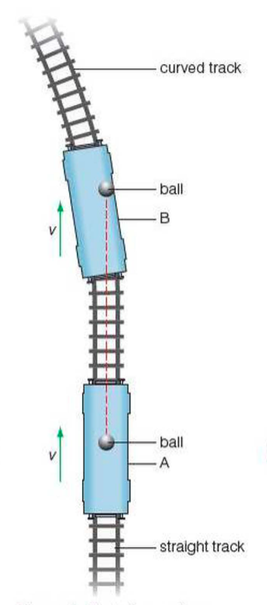
⇒ This image shows the path of a railway as it turns round a corner (part of a circle), moving from A to B at a constant speed, v
- The rail provides a force to change the direction of the carriage
- However, a ball that is placed on the floor behaves differently
- The ball carries on moving in a straight line until it meets the side of the carriage
- The ball experiences no force, so, as predicted by Newton's first law of motion, it carries on moving in a straight line at a constant speed, until the side of the carriage exerts a force on it
⇒ Now suppose that the ball is suspended from the ceiling of the carriage and the experiment is repeated
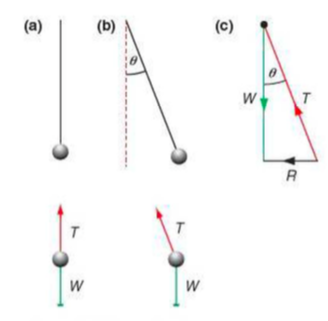
- This image illustrates what happens now as the carriage moves from a straight track to a curved track
- In (a) the carriage moves along a straight track at a constant speed - the ball hangs stright down and the forces acting on it balances: the tension in the stright, T, upwards, balances the ball's weight, W, downards
⇒ In (b) the train turns the corner
- The ball keeps moving in a straight line until tension in the string acts to pull the ball round the corner
- Now, the forces acting on the ball do not balance
- The vector sum of the tension T and the weight W provides an unbalanced force R, which acts towards the centre of the circle (c)
⇒ This unbalanced force R provides the centripetal acceleration - so we can write: R = mv2⁄r
- Where R is the unbalanced centripetal force, m is the mass of the ball, v is the ball's forward speed, and r is the radius of the (circular) bend it is going round
Understand This
⇒ Centripetal force: when an object moves around a circular path, there must be a centripetal force acting towards the centre of the circle. Something must provide this force, such as a pull from a string or a push from the road
⇒ It is important to understand that a centripetal force does not exist because something is moving round a curved path
- It is the other way around - according to newton's second law of motion, to make something change direction a force is required to make the object accelerate
- In the example here, the tension in the string provides the centripetal force, which is necessary to make the ball move in a circular path
- When a car turns a corner, the frictional froce from the road provides the centripetal force to change the car's direction
- When a satellite orbis the Earth, the gravitational pull of the Earth provides the centripetal force to make the satellite orbit the Earth - there is no force acting on the satellite other than gravity
A Common Misunderstanding
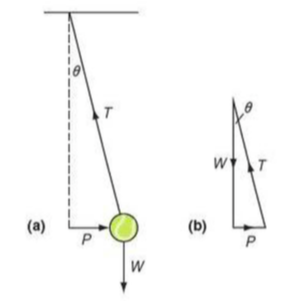
⇒ This image shows a ball hanging, at rest, at an angle in the laboratory
- Now it is kept in place by the balance of three forces: the tension in the string, T, its weight, W, and a sideways push, P, from a student's finger
⇒ If the student removes his finger, the ball will accelerate and begin moving to the left, because there is now an unbalanced force acting on it, exactly as there was above
⇒ However, the situations are different
- In this example, the ball is stationary until the finger is removed, and it begins to accelerate and move in the direction of the unbalanced force
- In the example of the ball on a string in the carriage, the ball is moving forward and the action of the unbalanced force is to change the direction of the ball
Example
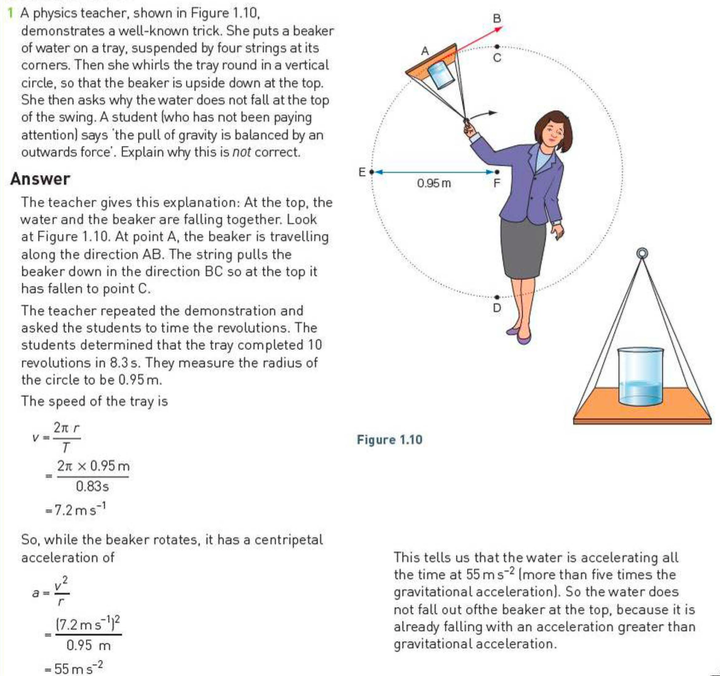
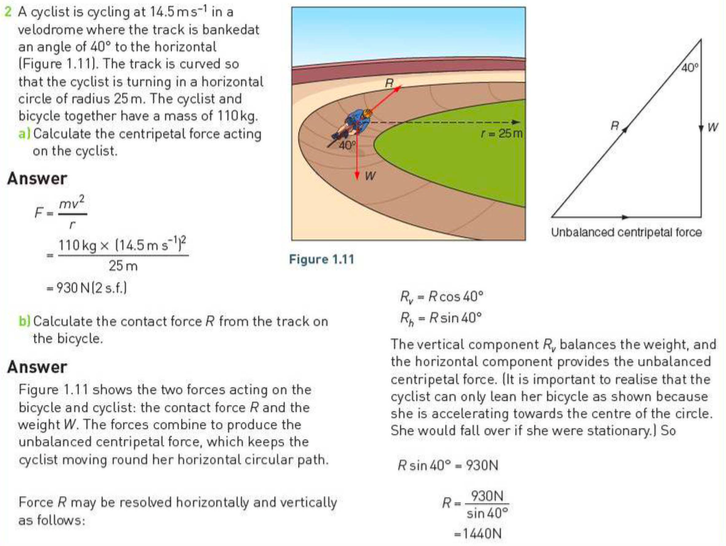
Extra
⇒ Also see our notes on: